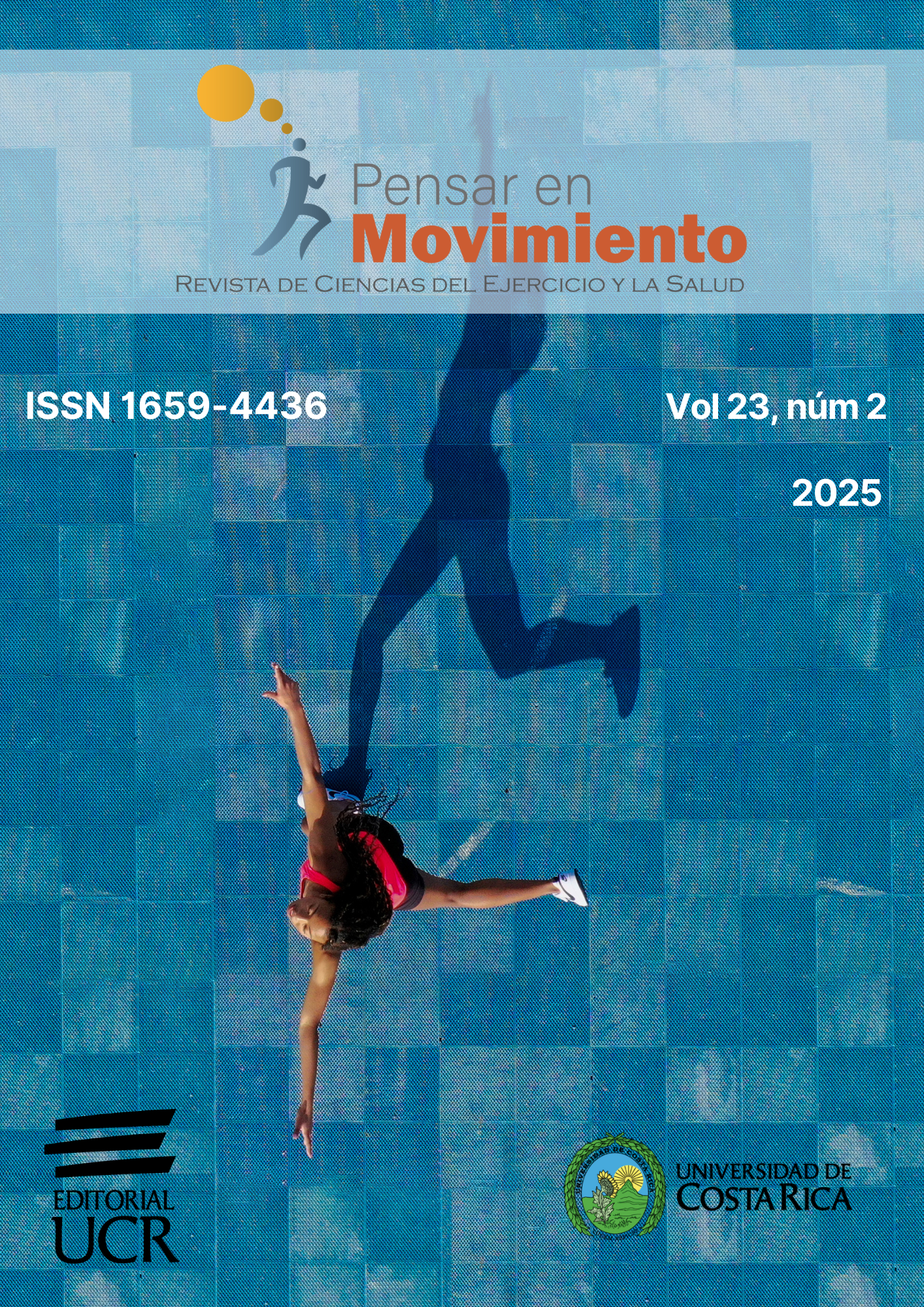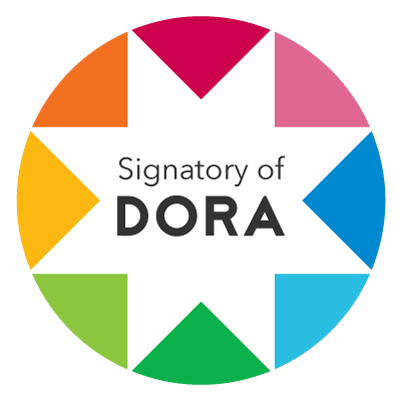Motor learning in human movement science: a bibliometric analysis
DOI:
https://doi.org/10.15517/1qke4780Keywords:
scientific production, bibliometric studies, human movement, motor behaviorAbstract
The increase in scientific production in various areas of human movement provides the opportunity to conduct bibliometric studies in motor learning. The aim of the present study was to systematize the information published in motor learning between 2000 and 2024, by means of a bibliometric analysis. A total of 570 relevant studies on the subject, published between 2000 and 2024, were selected through a search in the Scopus database. An analysis of performance and structure metrics was carried out, considering total publications, number of documents, annual growth rate of published articles, affiliations and most relevant authors, collaboration networks, most cited worldwide, thematic trends, among others. Of the 570 documents analyzed, G. Wulf was identified as the most relevant author, the University of Toronto as the most relevant affiliation, and the United States of America as the country with the highest scientific production. The most cited study aborded the concept of the degrees of freedom problem. In conclusion, this work provides an overview of the scientific production of the subject related to motor learning in the last 25 years.
Downloads
References
Aria, M., y Cuccurullo, C. (2017). bibliometrix: An R-tool for comprehensive science mapping analysis. Journal of Informetrics, 11(4), 959-975. https://doi.org/10.1016/j.joi.2017.08.007
Brady, F. (2004). Contextual Interference: A Meta-analytic study. Perceptual and motor skills, 99(1). https://doi.org/10.2466/pms.99.1.116-126
Bressel, E., Yonker, J. C., Kras, J., y Heath, E. M. (2007). Comparison of static and dynamic balance in female collegiate soccer, basketball, and gymnastics athletes. Journal of athletic training, 42(1), 42–46. https://pubmed.ncbi.nlm.nih.gov/17597942/
Carter, M. J., y Ste-Marie, D. M. (2017). An interpolated activity during the knowledge-of-results delay interval eliminates the learning advantages of self-controlled feedback schedules. Psychological Research, 81(2), 399-406. https://doi.org/10.1007/s00426-016-0757-2
Chua, L.-K., Jimenez-Diaz, J., Lewthwaite, R., Kim, T., y Wulf, G. (2021). Superiority of external attentional focus for motor performance and learning: Systematic reviews and meta-analyses. Psychological Bulletin, 147(6), 618-645. https://doi.org/10.1037/bul0000335
Donthu, N., Kumar, S., Mukherjee, D., Pandey, N., y Lim, W. M. (2021). How to conduct a bibliometric analysis: An overview and guidelines. Journal of Business Research, 133, 285-296. https://doi.org/10.1016/j.jbusres.2021.04.070
Ferreira, B. P., Malloy-Diniz, L. F., Parma, J. O., Nogueira, N. G. H. M., Apolinário-Souza, T., Ugrinowitsch, H., y Lage, G. M. (2018). Self-Controlled Feedback and Learner Impulsivity in Sequential Motor Learning. Perceptual and Motor Skills, 126(1), 157-179. https://doi.org/10.1177/0031512518807341
Jiménez-Díaz, J. (2020). Aprendizaje motor y feedback: Una revisión de literatura. Revista Iberoamericana de Ciencias de la Actividad Física y el Deporte, 9(3), 42-58. https://doi.org/10.24310/riccafd.2020.v9i3.6385
Jiménez-Diaz, J., Chaves-Castro, K., y Morera-Castro, M. (2021). Effect of Self-Controlled and Regulated Feedback on Motor Skill Performance and Learning: A Meta-Analytic Study. Journal of Motor Behavior, 53(3), 385-398. https://doi.org/10.1080/00222895.2020.1782825
Jiménez-Díaz, J., Chaves-Castro, K., Morera-Castro, M., Portuguez-Molina, P., y Morales-Scholz, G. (2024). Physical practice, mental practice or both: A systematic review with meta-analysis. Journal of Physical Education and Human Movement, 5(2), 1-14. https://doi.org/10.24310/jpehm.5.2.2023.17875
Kim, T., Jimenez-Diaz, J., y Chen, J. (2017). The effect of attentional focus in balancing tasks: A systematic review with meta-analysis. Journal of Human Sport and Exercise, 12(2). https://doi.org/10.14198/jhse.2017.122.22
Latash, M. L., Scholz, J. P., y Schöner, G. (2007). Toward a new theory of motor synergies. Motor Control, 11(3), 276-308. https://doi.org/10.1123/mcj.11.3.276
Macama Guerrero, N. A., y Monroy Bohorquez, D. M. (2018). Efectos de la realidad virtual sobre el aprendizaje motor en niños con parálisis cerebral. Revisión de literatura. [Proyecto de investigación para optar al título de especialista en fisioterapia de neurorrehabilitación, Institución Universitaria Escuela Colombiana de Rehabilitación, Facultad de Fisioterapia]. Repositorio Institucional ECR. https://repositorio.ecr.edu.co/server/api/core/bitstreams/e3cce37e-e72b-41fa-9f94-55dee7b68697/content
Magill, R. A. (1990). Motor Learning Is Meaningful for Physical Educators. QUEST, 42, 126-133. https://www.tandfonline.com/doi/abs/10.1080/00336297.1990.10483984
Magill, R. A., y Anderson, D. (2013). Motor Learning and Control: Concepts and Applications. (10th ed.). McGraw-Hill Higher Education.
Merians, A. S., Jack, D., Boian, R., Tremaine, M., Burdea, G. C., Adamovich, S. V., Recce, M., y Poizner, H. (2002). Virtual reality–augmented rehabilitation for patients following stroke. Physical Therapy, 82(9), 898-915. https://doi.org/10.1093/ptj/82.9.898
Ramos, M. B., Koterba, E., Rosi Júnior, J., Teixeira, M. J., y Figueiredo, E. G. (2019). A Bibliometric Analysis of the Most Cited Articles in Neurocritical Care Research. Neurocritical Care, 31(2), 365-372. https://doi.org/10.1007/s12028-019-00731-6
Schmidt, R. A., y Lee, T. D. (2013). Motor Learning and Performance: From Principles to Application. (6th ed.). Human Kinetics. van Eck, N. J., Waltman, L., Dekker, R., y
Shea, C. H., y Wright, D. L. (1997). An Introduction to Human Movement: The Sciences of Physical Education. Allyn and Bacon.
van den Berg, J. (2010). A comparison of two techniques for bibliometric mapping: Multidimensional scaling and VOS. Journal of the American Society for Information Science and Technology, 61(12), 2405-2416. https://doi.org/10.1002/asi.21421
Wulf, G., y Lewthwaite, R. (2016). Optimizing performance through intrinsic motivation and attention for learning: The OPTIMAL theory of motor learning. Psychonomic Bulletin & Review, 23(5), 1382-1414. https://doi.org/10.3758/s13423-015-0999-9
Wulf, G., Shea, C., y Lewthwaite, R. (2010). Motor skill learning and performance: A review of influential factors. Medical Education, 44(1), 75-84. https://doi.org/10.1111/j.1365-2923.2009.03421.x
Xu, F., Xu, J., Zhou, D., Xie, H., y Liu, X. (2022). A Bibliometric and Visualization Analysis of Motor Learning in Preschoolers and Children over the Last 15 Years. Healthcare, 10(8), 1415. https://doi.org/10.3390/healthcare10081415







